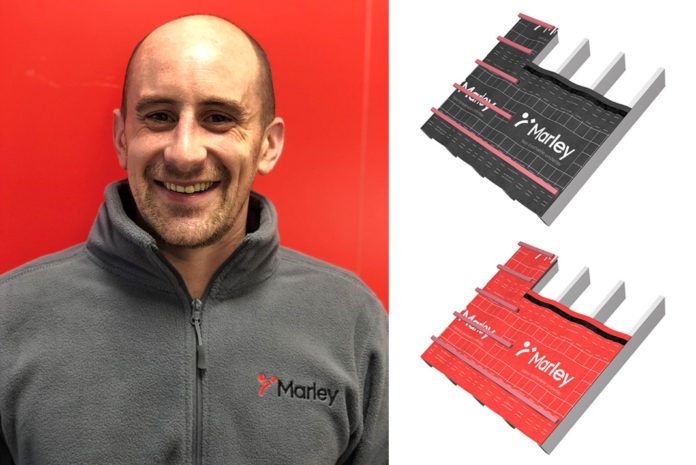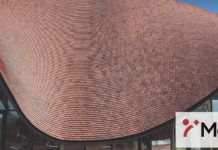As we head into 2019, Jamie Riddington from Marley’s technical team takes a look at one of the most common contractor queries – underlays and ventilation
Every year, our technical helpline receives thousands of calls from roofing contractors about a whole range of issues – from feasibility and product advice, through to fixing specifications and installation queries. While many are one-off questions, there are some that we see time and time again and without a doubt, one of the most frequent queries is about underlays and ventilation requirements.
It is clear there are still some ‘grey’ areas when it comes to the use of ventilation with underlays, particularly surrounding their use with clay and concrete tiles. This uncertainty partly arises from the fact that the industry terminology of a ‘breathable underlay’ is somewhat misleading, as it suggests that ventilation is not required. This, combined with the fact that some manufacturers state that their underlays don’t require additional ventilation, means it is hardly surprising there is still so much confusion.
The British Standard BS 5250 does not consider the situation where it is proposed to provide no ventilation to the roof void. As such, our recommendations are in line with this British Standard, that roofs will always require some form of supplementary low and high level ventilation, regardless of what underlay is used.
Here we share the best practice advice we give to contractors about underlays and ventilation:
1. Follow BS 5250
Always comply with BS 5250:2011+A1:2016 ‘Code of practice for control of condensation in buildings’ and BS 9250:2007 ‘Code of practice for design of the airtightness of ceilings in pitched roofs’. These standards set out what ventilation is required for cold and warm roofs.
2. Don’t rely on breathable underlay as the sole means of ventilation
As well as the breathable underlay, roofs will always require some form of supplementary low and high-level ventilation in accordance with BS 5250. This is also a tried and tested approach which avoids placing the heavy long-term burden of effective roof ventilation on one single element. The cost of adding ventilation components is relatively small in comparison to having to go back and repair condensation damage.
Some manufacturers state that the performance of their underlays negates the requirement for additional ventilation. However, this remains strictly under the control of third-party certification (e.g. BBA) and is outside the scope of BS 5250. It is therefore risky to assume that a fully breathable underlay is adequate on its own without checking other factors, such as how well sealed the ceiling is and the air permeability of the roof covering.
3. Ventilation is the sum of its parts
Despite misconceptions, breathable underlays should not be solely relied upon when installing clay and concrete roof tiles and additional roof ventilation is also recommended. This can be achieved using an array of solutions, including eaves ventilation, ventilated dry ridge systems, ridge vents or multiple tile vents to provide the recommended minimum ventilation in accordance with BS 5250.
4. Interlocking tiles do need additional ventilation
Because there is a small amount of air openness with interlocking tiles, there is a myth that you don’t need additional ventilation if you are using a breathable underlay. However, that is not the case. For the purposes of BS 5250, all variables in the roof build-up, including the external covering such as standard interlocking tiles, must be considered. As such, roofs will almost always require supplementary low and high-level ventilation.
5. Choose the right underlay
There are a number of design-related considerations which might affect the type of underlay you choose. These include:
- Is it a warm or a cold roof?
- Does the property have a well-sealed ceiling or vapour control layer?
- What type of roofing product are you using? E.g. close fitting or not
- The size of the roof/property
- What wind zone is it in?
Our technical team can help advise you on the right underlay for your project.
6. Seek advice
Ventilation requirements are complicated, so if you have any doubts at all, you can call our technical helpline, who can provide advice and free specifications. It is better to get ventilation right first time, than be called back for costly repair work due to condensation damage. Just as you would get a new fixing specification for every project, it is advisable to do the same with ventilation. The Marley team can provide free NBS specifications for you – either online via our website below, or by calling our technical team on 01283 722588.




